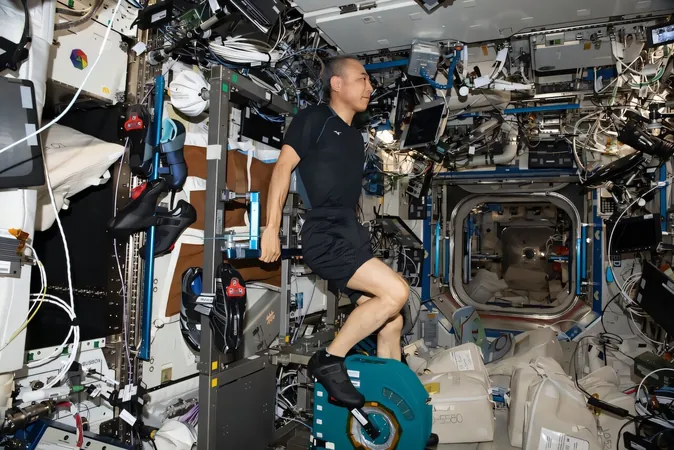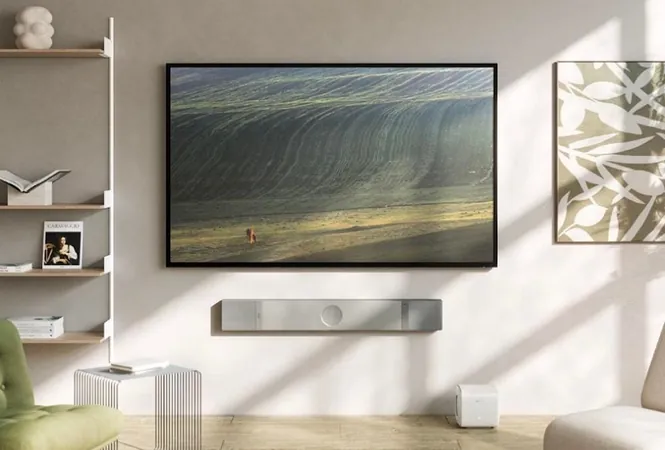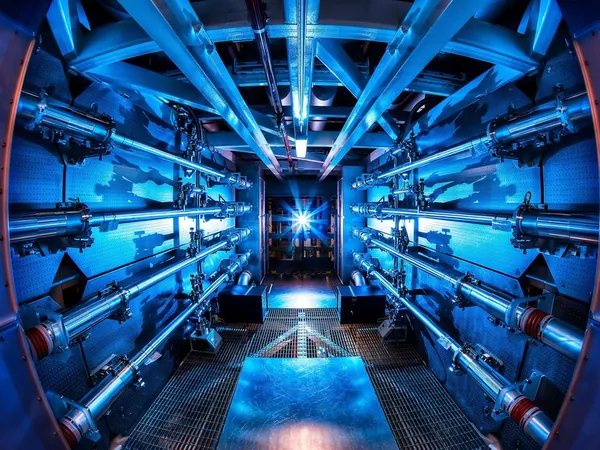
Astronauts' Revolutionary 'Bubble Muscles' Set to Transform Space Travel on Mars
2025-06-16
Author: Charlotte
A New Frontier in Space Exploration
When humanity finally sets foot on Mars, astronauts will face a daunting challenge: adapting to a gravity that's only 37% of what we experience on Earth. After enduring months of weightlessness during their journey, these space travelers will find their muscles and bones in a weakened state, struggling to perform even basic tasks. But researchers at the University of Bristol are stepping up with an innovative solution: a soft, wearable exosuit powered by cutting-edge inflatable "bubble muscles."
The Hidden Dangers of Space Travel
A typical Mars mission can stretch over 1,000 days, with astronauts spending approximately 40% of that time in zero gravity. This prolonged exposure leads to a staggering loss of muscle mass—up to 20% each month—and a decline in bone density of 1%-2% monthly. As they arrive on Mars, astronauts will need to tackle physically demanding tasks like lifting heavy equipment and navigating vast landscapes. But how can they do this with bodies weakened by space?
The Limits of Existing Solutions
Current measures, such as the intensive two-hour daily exercise routines aboard the International Space Station, offer only minimal protection. While rigid robotic exoskeletons have been explored as a solution, their cumbersome weight and bulkiness make them challenging to integrate with spacesuits.
A Game-Changer: Bubble Artificial Muscles (BAMs)
The team at Bristol, led by Emanuele Pulvirenti, has published a groundbreaking paper in Acta Astronautica detailing their development of "Bubble Artificial Muscles" (BAMs). These lightweight, pneumatic actuators inflate with air to provide dynamic muscle assistance, much like advanced arm floats found in swimming pools. The BAMs are engineered for efficiency, offering precise support to astronauts as they move.
Supporting Mobility on Mars
Three of these bubble muscles work in unison to aid astronauts in bending their knees while walking. When inflated, they contract to provide extra force, compensating for weakened muscles and enabling natural movement. The team constructed a sophisticated robotic leg to simulate walking in Martian gravity, and the results were promising: the exosuit successfully enhanced knee-bending angles and sped up leg movements without disrupting natural walking rhythms.
Implications Beyond Space
While primarily designed for extraterrestrial exploration, this technology boasts significant potential for Earth applications. The lightweight design of bubble muscle exosuits makes them perfect for assisting individuals with mobility challenges, providing a comfortable and effective alternative to traditional mechanical supports.
A Step Towards the Stars
This research marks a crucial advancement in making long-duration space missions viable, ensuring that when humans finally tread on Martian soil, they will have the technological backing necessary to explore and thrive in this alien environment.









 Brasil (PT)
Brasil (PT)
 Canada (EN)
Canada (EN)
 Chile (ES)
Chile (ES)
 Česko (CS)
Česko (CS)
 대한민국 (KO)
대한민국 (KO)
 España (ES)
España (ES)
 France (FR)
France (FR)
 Hong Kong (EN)
Hong Kong (EN)
 Italia (IT)
Italia (IT)
 日本 (JA)
日本 (JA)
 Magyarország (HU)
Magyarország (HU)
 Norge (NO)
Norge (NO)
 Polska (PL)
Polska (PL)
 Schweiz (DE)
Schweiz (DE)
 Singapore (EN)
Singapore (EN)
 Sverige (SV)
Sverige (SV)
 Suomi (FI)
Suomi (FI)
 Türkiye (TR)
Türkiye (TR)
 الإمارات العربية المتحدة (AR)
الإمارات العربية المتحدة (AR)